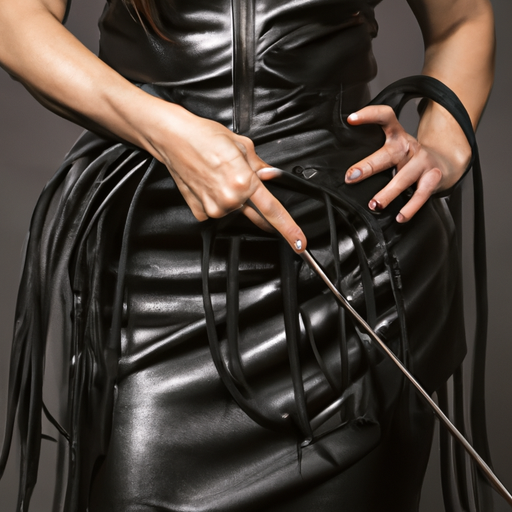In the realm of human relationships, there exists a vast array of dynamics and configurations. One such dynamic that has gained attention and intrigue is the Femdom relationship, where a woman takes on the dominant role in a partnership. While this type of relationship can take many forms and vary greatly from couple to couple, there are some common dynamics that tend to emerge, particularly in relationships between mature individuals.
First and foremost, it is essential to understand that Femdom relationships are consensual and mutually agreed upon. They are not about one person exerting power or control over the other without their consent. Instead, they are rooted in trust, respect, and a shared understanding of power dynamics. In these relationships, the woman, known as the Dominant or Domme, takes on the role of the leader, while the man, known as the submissive or sub, willingly relinquishes control to her.
Communication is a vital aspect of any relationship, and this holds true for Femdom relationships as well. Mature individuals in these relationships understand the importance of open and honest communication. They discuss their desires, boundaries, and expectations openly, ensuring that both partners are comfortable with the dynamics at play. This level of communication fosters trust and helps establish a solid foundation for the relationship.
Another common dynamic in Femdom relationships between mature individuals is the establishment of rules and protocols. These rules can range from simple tasks or rituals to more complex protocols that dictate behavior and expectations. For example, the Domme might set rules regarding the sub’s attire, behavior, or daily tasks. These rules not only serve to reinforce the power dynamic but also provide structure and guidance for both partners.
Within the realm of Femdom relationships, the concept of ‘power exchange’ is often discussed. Power exchange refers to the voluntary transfer of power from the submissive to the Dominant. In this dynamic, the Domme holds the power, while the sub willingly submits to her authority. This exchange of power can manifest in a variety of ways, including BDSM activities, role-playing, or the Domme making decisions on behalf of the sub. It is important to note that power exchange is consensual and should always be negotiated and agreed upon by both partners.
Trust and consent are paramount in any relationship, and Femdom relationships are no exception. Mature individuals in these relationships understand the importance of trust and consent and prioritize these elements at all times. Consent is continually sought and given throughout the relationship, ensuring that both partners feel safe, respected, and valued. Trust is built over time through open communication, mutual respect, and the consistent honoring of boundaries and agreements.
While Femdom relationships can involve elements of BDSM, it is important to remember that not all Femdom relationships are focused solely on physical domination or pain. Each relationship is unique, and the dynamics within it are shaped by the desires and boundaries of the individuals involved. Some couples may engage in BDSM activities such as bondage, spanking, or role-playing, while others may focus more on psychological domination or service-oriented dynamics. It is crucial to recognize that the boundaries and limits of each individual must always be respected and honored.
In conclusion, Femdom relationships between mature individuals are rooted in trust, respect, and open communication. These relationships are consensual, with both partners willingly engaging in power dynamics that suit their desires and needs. While there are common dynamics that tend to emerge within these relationships, it is important to remember that each relationship is unique and shaped by the individuals involved. The key to a successful Femdom relationship lies in open communication, trust, consent, and the consistent honoring of boundaries. Click here for more.
Are mistress femdom stories primarily written by women or men?
In the realm of adult literature, there exists a diverse range of genres and subgenres that cater to various preferences and fantasies. One such subgenre that has gained popularity over the years is femdom, which stands for female dominance. Within the femdom community, there is a specific subset known as ‘mistress femdom,’ which revolves around the dynamic between a dominant woman, known as a mistress, and a submissive partner, often referred to as a slave or sub.

Now, the question arises: Are mistress femdom stories primarily written by women or men? To unravel this query, we must delve into the world of erotica and explore its authors and readership.
Historically, the majority of erotic literature has been written by men, catering to a primarily male audience. However, with the advent of the internet and the growth of online communities, the landscape of adult literature has undergone a significant transformation. Today, many women have found their voice and have become active participants in creating and consuming erotic content, including femdom stories.
While it is challenging to obtain precise data on the gender breakdown of authors, we can make certain observations based on the available information. It appears that both men and women contribute to the creation of mistress femdom stories. The reasons for this are varied and complex, as individuals from all walks of life can be drawn to exploring and expressing their desires through writing.
For women, writing mistress femdom stories can be a way to assert their power and explore their own dominant side. It offers an opportunity to challenge traditional gender roles and delve into fantasies that might not be easily explored in real-life situations. By crafting these stories, women can explore their desires, express their creativity, and connect with like-minded individuals within the femdom community.
On the other hand, men writing mistress femdom stories may be driven by a fascination with female dominance and submission. This exploration can be an extension of their own desires or a way to understand and appreciate the experiences of others. Men may also write these stories to attract an audience that shares their interests or to connect with dominant women who enjoy such narratives.
It is important to note that the motivation behind writing mistress femdom stories is not limited to gender. Erotic literature, including femdom stories, provides an outlet for individuals of all genders to explore their fantasies and engage with their desires in a safe and consensual manner. It fosters a space where people can connect, share experiences, and celebrate their unique interests and desires.
In conclusion, the question of whether mistress femdom stories are primarily written by women or men does not have a straightforward answer. Both genders contribute to the creation of these stories, driven by various motivations, desires, and interests. The evolving landscape of adult literature, particularly the rise of online communities, has allowed individuals from all backgrounds to express themselves freely and connect with like-minded individuals. Ultimately, it is the diversity and inclusivity within the femdom community that makes it a vibrant and thriving space for exploration and self-expression.
